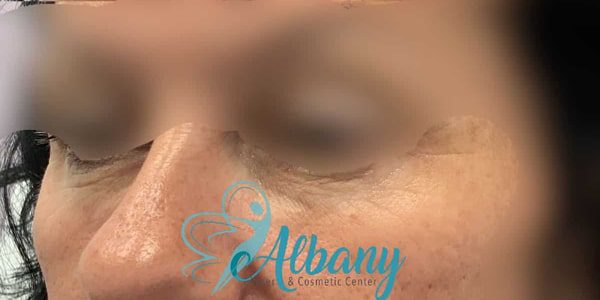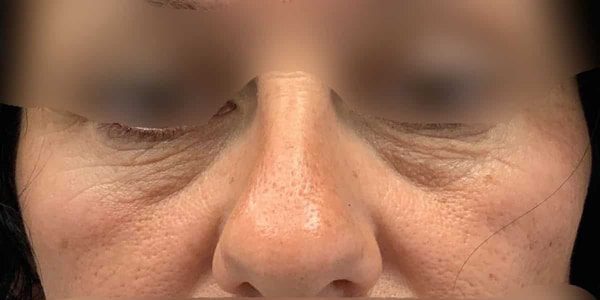Results of Under-eye fillers
The patient is in her mid-50s and has a shadow beneath her eyes. After obtaining her medical history, we operated the under-eye fillers on her.
Moreover, reviewing her past therapy. There was no numbing agent applied.
What are Under-eye fillers?
The phrase “filler” (also known as “dermal filler” or “dermal volumizers”) refers to the gel-like substances injected into the skin to replace lost volume.
We utilize undereye fillers to fill the tear trough, a region underneath the eye.
The loss of fats around the eyes (periorbital region) may cause various aesthetic issues, including dark circles, under-eye bags, and shadows around the eye.
However, undereye fillers injections have restrictions, and bigger undereye bags may be prohibitively expensive.
Blepharoplasty, a surgical operation that we do not provide, is commonly used to treat big festoons under the eyes.
Do fillers solve all your under-eye issues?
It’s crucial to remember that fillers won’t solve all of your under-eye issues.
Under-eye fillers are fantastic for replacing lost volume. However, they aren’t a quick fix for all dark circles if you have visible tear troughs and hollows under your eyes.
The filler isn’t going to correct pigmentation. Filler will alleviate your dark circles if caused by the increased pigment in the skin, which is quite prevalent in persons with darker skin tones.
Types of fillers
Juvederm and Restylane, two of the most popular fillers, comprise hyaluronic acid.
Because it’s compatible with the extremely thin and fragile tissue in this section of the face, hyaluronic acid fillers are the most popular for treating the under-eye region.
Because it has a decreased risk of both immediate and delayed swelling, Juvederm Volbella is the most often used H.A. filler for the tear trough region.
Juvederm Volbella is our favourite filler for under the eyes. It is the thinnest filler on the market and has the least water absorption.
Sharp needles V.S. cannula
Under-eye fillers may use two alternative techniques. Some cosmetic injectors (nurses, pharmacists, and M.D.s) still prefer to utilize hypoderm sharp needles to deposit fillers in the tear trough region, whereas most cosmetic injectors (nurses, pharmacists, and M.D.s) prefer to use a blunt cannula. Using a cannula reduces edema and bruises in several trials.
https://youtu.be/i_3eJCu2Ysg
Under-eye filler results
We shot the before and after photos two weeks apart. The look of the tear trough region has significantly improved. The hue isn’t quite as black as it formerly was.
For 48 hours, the patient reported no bruising and little swelling. Because the region doesn’t move around much, the under-eye filler may endure for 12 to 18 months on average. (in contrast to how lip injections disintegrate fast because of all the movement with talking, eating, and breathing). The filler’s impact will gradually fade over time. That means you won’t have to worry about your under-eye filler fading away in the blink of an eye.
Alberta College of Pharmacy Ban on aesthetic injections
Botox for chin wrinkles in Edmonton




